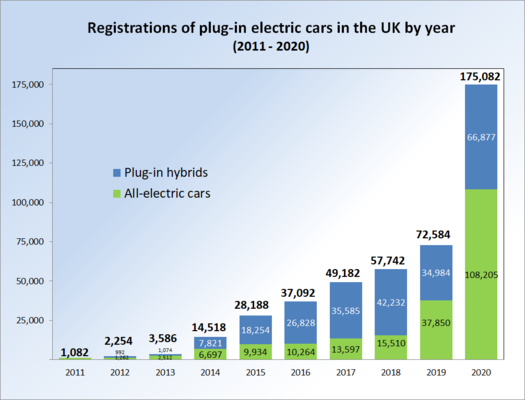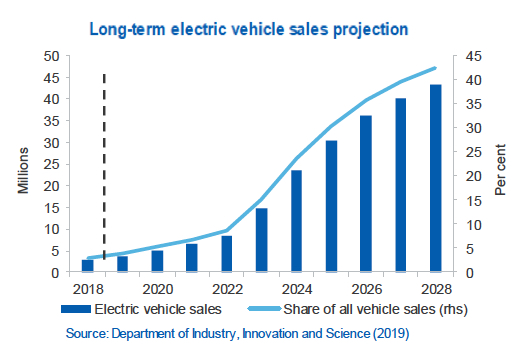
Published: 26/05/2021
November 2020 saw the announcement that after 2030, new petrol and diesel cars and vans will no longer be sold in the UK. This has created a momentum for companies and drivers to review their approach towards cleaner vehicles. It raises the question, is the electric vehicle market, a cunning investment? Does it make financial sense to restore an electric vehicle as opposed to pursuing the current heavy price tag of a brand new one?
The UK looks set to be heading towards an electric vehicle (EV) uprising. Electricity has picked up momentum as a source of power for vehicles. As we move through 2021 has there been progress in the electric vehicle (EV) industry? Are the barriers to entry into the market as a consumer still apparent and what are those barriers? Is the alternative and savvy route into EV vehicles through damaged vehicles?
Here we take a look at the current position of EVs in the UK and what progress is being made as we head towards 2030.
How many electric vehicles are there in the UK?

To put EV sales into perspective, 2019 saw global electric car sales reach 2.5% of the market share. 2020 EV car sales hit 4.2%. 2021 predicted sales are rocketing towards 7% and 10% in 2022.

Electric vehicles can be broken down into different types.
- Plug-in Hybrid Electric Vehicles (PHEVs): equipped with both a battery that can be charged by being plugged in and a petrol or diesel engine. Zero emissions is only achieved when the vehicle is driven in electric-only mode and the vehicle can be driven in either electric mode or petrol/diesel powered.
- Hybrid Electric Vehicles (HEVs): these vehicles have similarities to PHEVs but the battery is smaller in size, cannot be plugged in and is only charged through braking and cruising. Their zero emissions electric-only modes are very limited.
- Battery Electric Vehicles (BEVs): powered entirely by motor/battery, these vehicles need charging by an external power source. They have no emissions.
Figures to date indicate that there are approximately 239,000 zero-emission BEVs in the UK with over 100,000 registered in 2020 alone. There are 259,000 PHEVs and 629,000 conventional hybrids on the roads in the UK. This represents a 180% year-on-year rise and a rise in the overall UK market from 1.6% to 6.6%.
Whilst electric vehicles make up a small number of new cars on the road in the UK, the figures are changing rapidly. 2020 saw a higher proportion of new electric vehicles than ever before and it’s predicted this figure will continue to climb.
There are still significant barriers for consumers and resellers to enter the EV. Here we look at the pros and cons that are bringing people in and conversely, keeping them out of the market.
Pros and cons of owning an electric vehicle.
If you’re pursuing the opportunity to salvage an EV, arm yourself with some common facts around EV vehicles.
What are the pros of owning an electric vehicle?
- Zero emissions. In driving an EV you are covering miles and miles of road whilst emitting zero emissions. The vehicle battery powers the electric motor and electrics with no waste material.
- Buying incentive. Whilst EVs are relatively expensive in comparison to petrol and diesel cars, the incentives on offer can make them an attractive buy. The PICG (Plug-In Car Grant) sits amongst the most attractive at £3000 for pure electric vehicles with a list price of under £50,000.
- Low running costs. Once you’ve made the purchase, the day to day running costs are significantly lower than petrol or diesel cars.
- Tax benefits. An EV bought as a private vehicle will qualify for free road tax when the vehicle costs less than £40,000. 2020 also produced a surprise benefit for business owners of EVs with an exemption of Benefit in Kind (BIV) company car tax on pure EVs.
What are the Cons of an Electric Vehicle?
- Charging points. What was once a major barrier to entry is now being removed with Government schemes to increase charging points available to EV drivers. Charging schemes are an alternative option such as Pod Point or Ecotricity.
- Charging time. EVs require a change of mindset. Forward planning needs to feature heavily as an EV owner.
- Battery range. With a range of approximately 150-200 miles, owning an EV will carry the anxiety of whether you can reach your destination before running out or having to charge your vehicle. Carmakers are also looking to extend the range of future EVs to up to 300 miles, so this barrier should be reduced/removed as advancements are made in EV technology.
- Purchase price. EVs are currently sitting in the heavier price range with a premium of approximately £10,000 over a petrol or diesel car. Grants can skim off some of the price but they’re still pricey leading to the question of whether salvage EVs are the better investment.
With many consumers finding the price of a new EV prohibitively high, could a salvaged EV provide the price point that will appeal whilst providing good margins?
As the appetite for EVs climbs steeply so too does the availability of used EVs. Combine the lure of EV buying incentives, the ever increasing intricacies of diesel legislation and the attraction of eco-friendly zero-emissions and, you have an attractive proposition for a consumer. With vehicle popularity comes demand across all sectors, both new EVs and used.
The rapidly changing technology of EVs is accompanied by a high price tag. Until the market saturates further, this price is looking like it’ll remain high. Pre-owned salvage EVs are therefore of exceptional value and will sell fast. Autotrader states that EVs will depreciate faster than gas-powered cars which, as a used-EV shopper will come as good news as you can grab yourself a bargain.
Before you choose to restore EV’s, you should be prepared to work with understanding the regulations surrounding them.
Safety data sheets: available from manufacturer’s websites, these sheets contain colour coded diagrams that show danger zones and the presence of high voltages as well as where the main isolator switch is. The physical switch can turn off the power after a crash if the deployment of the airbags hasn’t automatically done so.
Battery location: the concern around batteries is the chances of a fire in an EV vehicle crash. But this has been addressed by manufacturers. In the majority of vehicles, the battery sits within the central safety cage of the vehicle that protects the vehicle's occupants. A sharp object could still penetrate this cage so manufacturers are obliged to prove that the battery is impenetrable by such sharp objects.
Salvage Code of Practise: companies such as Copart are required to adhere to a strict code of practise that takes into consideration health, safety and pollution regulations. Specialist staff who are highly qualified will handle damaged EV vehicles.
Battery recycling: this can be problematic as lithium-ion battery recycling plants can only be found in Belgium, Germany and Sweden. This has now been rectified and manufacturers will take back batteries via dealer networks. Steps are underway to research the re-use of EV batteries in the home or industrial settings so there is a hope that in the future, the batteries can be put to use.
Electronic components: these are dealt with in the same way as normal salvage vehicles. Up to 95% of a vehicle’s controls, motors, sensors and other such smaller electronic parts must be recycled. A review has been announced by the EU that will likely see electronic components have to come in line with the treatment of household electronic components following the Waste Electrical & Electronic Equipment (WEEE) guidelines.
As with all other vehicles, electric damaged vehicles are treated the same and must be addressed under the Code of Practise. This sees no restrictions on repair and reuse of vehicles that have been categorised as repairable.
So would buying a damaged electric vehicle be a good investment? Could using a CAT B vehicle’s parts be the way to keep costs down when repairing a vehicle?
Is it worth buying a category B car?
A Category B vehicle is one that has suffered serious damage, most likely in an accident. The insurance company has deemed the car beyond repair. In short, this makes them a great investment if you’re looking for particular parts to repair another vehicle and have the knowledge to dismantle the car appropriately.
Where can I buy a Category electric vehicle?
Copart has an extensive range of EVs that can spark up your current range of vehicles. Acquiring a huge and ever-expanding collection of both hybrid and electric vehicles, Copart has one of the widest collections of accident damaged low emission vehicle collection in Europe. Copart’s vehicles range from electric vehicles such as the Citroen C-Zero 1 and the Lexus IS 300H SE to hybrid vehicles such as the BMW 13 Range E and the Volvo XC90 T8.
As consumers become increasingly aware of environmental issues with a desire to change the welfare of the planet, Copart is responding to the spike in demand for EV vehicles. As the popularity grows, Copart’s aim is to become the flag-bearer of the EV Salvage Market.
No matter what forecast you look at, the EV trend is taking off. Just as the smartphone sped into the market in 2007, the 2020s will be the era of the electric car and it’s more than possible to enter the EV marketing without purchasing a brand new car.
Popular Topics
- Buying Repossessed Cars at Auction
Repossessed vehicles sold at Copart are different to the vast range of salvage categorised...
- Your Guide to Selling a Vehicle at Online Auction
Know the options available for selling cars in an online auction...
- Guide to Buying Flood Damaged Cars at Copart
Flood damaged cars can range from CAT B Salvage to CAT N Repairable - Non-Structural...
- How to Buy an Accident Damaged Vehicle
Accident damaged cars, also known as salvage in the trade industry, or total loss (write-offs)...
- CAT S and N Salvage - All You Need to Know
Category S (Repairable Structural) and Category N (Repairable Non-structural) came in...
- Why CAT B Vehicles Are a Great Source for Parts
This guide aims to explain what Category B Breaker cars are, and why you should consider...
